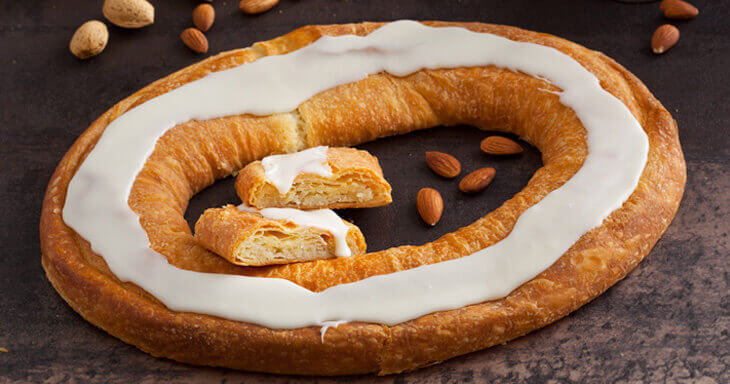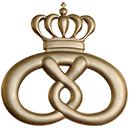
How to Eat Like a Viking Today
Thursday, April 18, 2024
The Vikings, with their intriguing, impressive, and at times fearsome reputation, have long captured our imagination. This diverse collection of Scandinavian kingdoms and their rich culture persistently inspire us through popular literature, media representations, and their lasting legacy.
Renowned for their towering stature and pioneering longships, the Vikings mesmerize with their fearless demeanor. What qualities rendered them indomitable? What dietary habits sustained their health and strength, and are they worth adopting today?
Viking Diet
Despite their legendary seafaring and raiding exploits, many overlook the fact that the Norsemen were self-sufficient farmers, fishermen, traders, and skilled artisans, hailing from Denmark, Sweden, and Norway. The term “Viking” possibly originates from the Latin word “vicus,” meaning “village” or “habitation.”
Archaeological finds suggest that the Vikings, contrary to popular belief, were hygienic and well-groomed, particularly among the wealthier individuals. Their children appeared to be healthy and well-nourished, implying that the Viking culture promoted self-care, physical activity, and a diverse and healthy diet.
So what did the typical Viking diet food list contain? Recovery and exploration of ancient Vikings’ lives suggest the following food types, inspiring the new Nordic diet. This eating pattern is primarily plant-based, relying on vegetables, fruits, legumes, whole grains, seafood, and dairy products, while limiting consumption of red meat, processed foods, butter, and sweets.
Protein

The Vikings relied heavily on fish like salmon, cod, halibut, plaice, herring, and shellfish such as mussels, oysters, and shrimp. Dairy products like milk, buttermilk, salted butter, cheese, and fermented milk such as surmjolk or skyr were also common. In a modern viking diet, options such as tuna, mackerel, sardines, fat-free or low-fat milk, and yogurt can be incorporated.
Additionally, smoked and cured meats such as pork, beef, seal, whale, and walrus were enjoyed by the Vikings, prepared in various ways including boiling, stewing, roasting, and in sausages. However, it’s worth noting that research indicates reducing red meat intake can lower the risk of conditions like heart disease and diabetes. Game meats such as venison, bison, and rabbit, along with occasional eggs, can be healthier alternatives.
Fruits and Vegetables

The Vikings gathered various fruits, nuts, and berries, including apples, cherries, plums, elderberries, blackberries, wild strawberries, juniper berries, and raspberries. They also consumed walnuts and hazelnuts as snacks and collected honey for mead. Vegetables grown by Viking era farmers included shallots, turnips, peas, beans, leeks, wild garlic, carrots, parsnip, and kale-like goosefoot. Herbs such as parsley, mustard, yarrow, pepper cress, rue, caraway, thyme, ransom plants, coriander, wild celery, and dill were also part of their diet. These same fruits, nuts, berries, and vegetables are ideal for a modern Viking meal plan.
Grains

Grains played a vital role in the Viking diet. Scandinavian excavations suggest the widespread use of grains to make beer, porridge, and bread, similar to Danish rye bread. These grains were transformed into hearty porridges, which held a special place in Viking culture. According to Viking King Harald Hardrada, “With butter, it is the best of dishes,” underscoring the importance of porridge as a filling and nutritious meal. Alongside porridge and bread, grains were integral to beer production, a central element in Norse festivities.
Healthy Everyday Eating with Nordic Flair
When food was abundant, so was the eating. Despite being labeled as gluttonous by the English, their diet wasn’t about indulgence, but rather sustenance for their active lifestyle. Their diet, rich in natural and unprocessed foods, fueled their energy and built muscle. Even Arabian diplomat Ahmad Ibn Fadlan, who traded with the Vikings, stated “I have never seen bodies more perfect than theirs.”
Modern analysis reveals that the Viking diet consisted of approximately 35 to 40% fats, 30 to 35% protein, and 30% carbohydrates – surprisingly similar to the high-performance diets favored by today’s bodybuilders. Viking meals were hearty, fatty, and tasty to comfort and warm. In harmony with this Danish concept of “hygge”, your daily Viking diet plan should revolve around pleasure and companionship.
Incorporating contemporary views on healthy eating, the Viking diet aligns with many modern dietary recommendations. Opt for protein-rich options like tuna, mackerel, sardines, salmon, low-fat dairy, yogurt, and legumes. Focus on incorporating plenty of leafy green and root vegetables, along with seasonal fruits, particularly antioxidant-packed berries and energy-rich nuts. Whole grains like barley and rye bread should also feature prominently in your meals, just as they did in the Viking era. Enhance your dishes with salt, vinegar, herbs, and spices, reserving beer and alcohol for special occasions. For a delightful finish to your meal, treat yourself to a Raspberry Kringle or Danish Cherry Bread Pudding for dessert.
Eat Like a Modern Viking

Many of us embrace the Viking approach to eating to share in their success. So with their sweet tooth and love of flavorful foods, what Norseman wouldn’t have killed for a delicious Danish Kringle? Why not embrace this traditional Scandinavian pastry treat from Viking-inspired O&H Danish Bakery? Visit one of our Wisconsin stores or browse our mouthwatering, Dane-worthy online selection today and place your order. Velbekomme!




